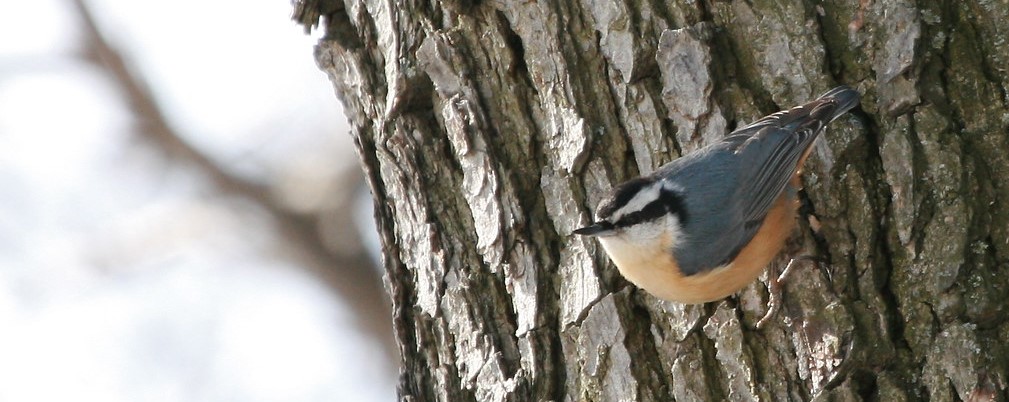The State We're In
Tracking winged travelers
By this time, most of New Jersey’s nesting migrators have headed south for the winter. Songbirds like orioles, hummingbirds, vireos, and most warblers won’t be seen again until next spring, and while some birds of prey stay during the colder months, tens of thousands of hawks, falcons, and eagles have already bid the Garden State farewell.
While we’re losing summer birds, we’re gaining a whole new group of winter birds coming down from points north. Pine siskins, red-breasted nuthatches and evening grosbeaks – rarely seen in New Jersey during the summer – are now being spotted in great numbers at feeders and in yards. Migratory seabirds and waterfowl are also arriving, as well as owls like the tiny Northern saw-whet.
Bird migrations are fascinating. Many migratory birds travel thousands of miles on their annual journeys. A sandpiper known as the red knot is the most extreme, traveling from the southern tip of South America to the Canadian arctic and back again each year, with a critical spring refueling stopover in New Jersey. Other birds may travel as far as Florida, the Gulf Coast, Mexico and Central America.
New Jersey’s location along the Atlantic Flyway gives us a ringside seat to the spectacular annual migration. The Atlantic Flyway is a major north-south migratory route that follows the Atlantic coast from Canada down to Central and South America.
If the state had an official birding capital, it would be Cape May, a global hotspot for viewing migrating birds. Cape May is busiest in the fall, when millions of birds head south along the flyway and down the narrow peninsula before crossing the Delaware Bay.
How do we know which birds go where, and when? For over a century, banding birds has been the best way to track their movements.
Bird banding involves attaching a small ring of metal or plastic to a bird’s leg, which is used to identify the bird. Data gathered from sightings of banded birds helps researchers study their migration routes, lifespans and nesting habits. The modern system of using numbered bands was begun in the early 1900s by Paul Bartsch, a scientist who banded black-crowned night herons near Washington, D.C.
But tracking banded birds has limitations, since many birds migrate at night.
The internet has helped enable citizen scientist birdwatchers to report their sightings. The eBird portal operated by the Cornell Lab of Ornithology and partners allows birders around the globe to post information and photos. Birders can use the eBird interactive map to learn where favorite species have been spotted, or which birds have been seen at a particular location.
With technology improving every day, a really interesting new tracking system is underway in New Jersey and beyond. The Motus Wildlife Tracking Network uses radio telemetry to track tagged birds.
Motus is Latin for “movement,” and this growing international research network was established in 2013 by the nonprofit Birds Canada.
Just last week, an antenna array for the Motus network was installed at New Jersey Conservation Foundation’s Franklin Parker Preserve in the Pine Barrens. Earlier in the year, Motus receiving stations were set up in the Ramapo Mountains of northern New Jersey and in Blairstown, near the Delaware River in the northwestern corner of the state. They joined existing Motus receiving stations at several locations, including Cape May, Brigantine, Sandy Hook, Duke Farms in Hillsborough and at East Point along the Delaware Bay.
The advantage of Motus is that it allows birds tagged with tiny, lightweight transmitters – as well as bats and large insects like butterflies and dragonflies – to be tracked continuously over long distances. Antenna arrays can pick up signals from the tags for about nine miles in any direction.
“They’re listening all the time, 24 hours a day, seven days a week,” said Alison Fetterman, who helped get the three new Motus receiving stations set up in New Jersey. “If the birds go past the station, their data will be captured.”
The Motus network has hundreds of receiving stations strategically located throughout North America and the Western hemisphere, and more are planned. Data collected by Motus are posted online for anyone to see, via an interactive map.
If you love watching birds and want to learn more about their movements, check out the eBird portal at https://ebird.org/home and the Motus website at https://motus.org/. Then grab your binoculars and visit some of New Jersey’s busiest birding hotspots!
One place you won’t want to miss this time of year is the Avalon Seawatch in Cape May County, run by the New Jersey Audubon Society.
The northern point of Avalon juts a mile farther east into the Atlantic Ocean than towns to the north, giving birders views of seabirds and waterfowl they might not otherwise see. Look for Northern gannets, loons, scoters, brants and buffleheads, among others. To see a list of recently observed species at the Avalon Seawatch, go to https://njaudubon.org/watches/avalon-seawatch/.
Enjoy New Jersey’s winter migratory birds while they’re here!
And for information about preserving New Jersey’s land and natural resources – including habitat for all kinds of birds – visit the New Jersey Conservation Foundation website at www.njconservation.org or contact me at info@njconservation.org.
About the Authors
Alison Mitchell
Co-Executive Director
John S. Watson, Jr.
Co-Executive Director
Tom Gilbert
Co-Executive Director, 2022-2023
Michele S. Byers
Executive Director, 1999-2021
View their full bios here.
Filter
Get The Latest News
From The Garden State
In the
News

